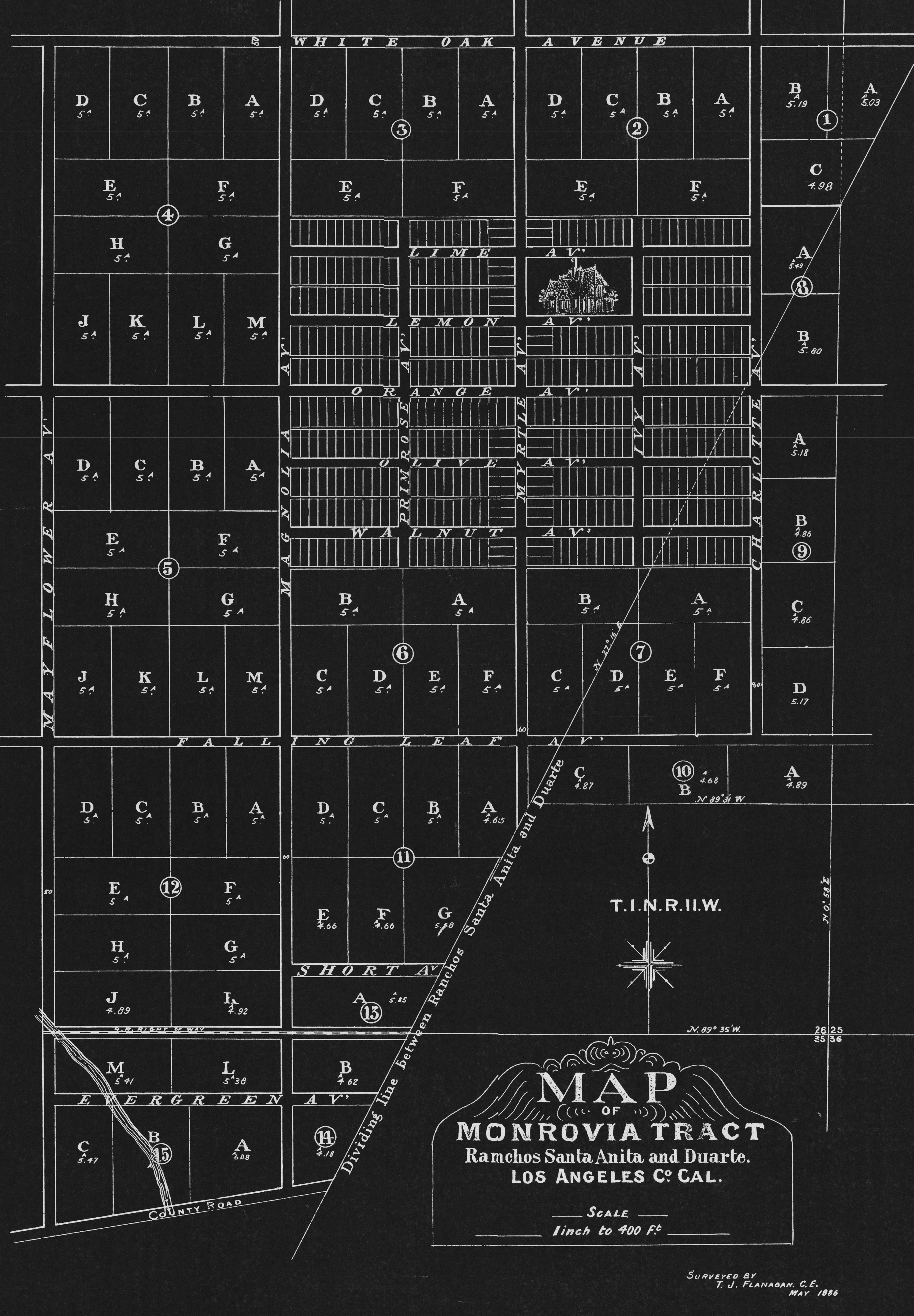
City Subdivisions
Choose the subdivision you wish to view.
Understanding how land was acquired and disbursed in 1880's Monrovia is to understand, in general, how other Southern California agricultural communities developed. The historical events which produced the boom of Southern California agricultural communities, such as Monrovia, are well-documented in Glenn S. Dumke's book, The Boom of the 80's. Briefly, the extension of railroads to the West Coast, the post-Civil War restlessness experienced by populations in the North and South, and the opportunity for land speculation created an opportunity for settlement in the coastal valleys of Southern California.

Monrovia's development involved five men with knowledge in two important areas, railroads and finance. These personalities made each other's acquaintances only by chance as they moved in the social and financial circles of 1870's Los Angeles. Detailed biographies of these men are available on this web site and elsewhere, but following is a quick overview of how five men contributed to the founding of Monrovia.
William Monroe, a former contractor with the Southern Pacific Railroad, was more aware than many of the importance of investing in land along a possible railway route. He became a Los Angeles City Councilman five years after his arrival to California, and he bought land in the Santa Anita Tract from Elias Baldwin and and a small amount of Rancho Azusa de Duarte from L.L. Bradbury.
This land was located in a part of what would become Monrovia. John D. Bicknell was an attorney for the Southern Pacific Railroad and had met Monroe in that capacity. Bicknell was also vice-president of the First National Bank with Edward F. Spence, who had also been mayor of Los Angeles. Monroe, who had met Spence socially in Los Angeles, told Spence about the land he purchased. James F. Crank built a steam railroad which passed through Monrovia and connected with the Santa Fe, which had been built west from San Bernardino. Jeremiah Falvey was Elias Baldwin's foreman and, therefore, was in a position to advise Monroe about the property.
These five men, in various combinations and singly, owned the major portion of would become the Town of Monrovia and the Monrovia Tract by the spring of 1886.
Lots went on sale in May of 1886, and the Town of Monrovia and the Monrovia Tract re-subdivided quickly. By the end of 1886, the Town of Monrovia had been subdivided four times, and many of the lots had changed owners so quickly that the Los Angeles County Tax Assessor had to identify the owners of 75 lots as "Unknown."
At this time, our research is confined to the Town of Monrovia Subdivision from 1885-1900 with some exceptions. Because these years correspond to the Victorian period, only the Victorian architectural style category contains any structures. Eventually all categories will contain structures.
